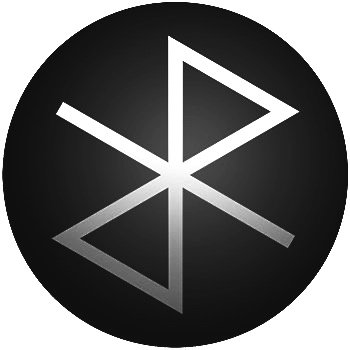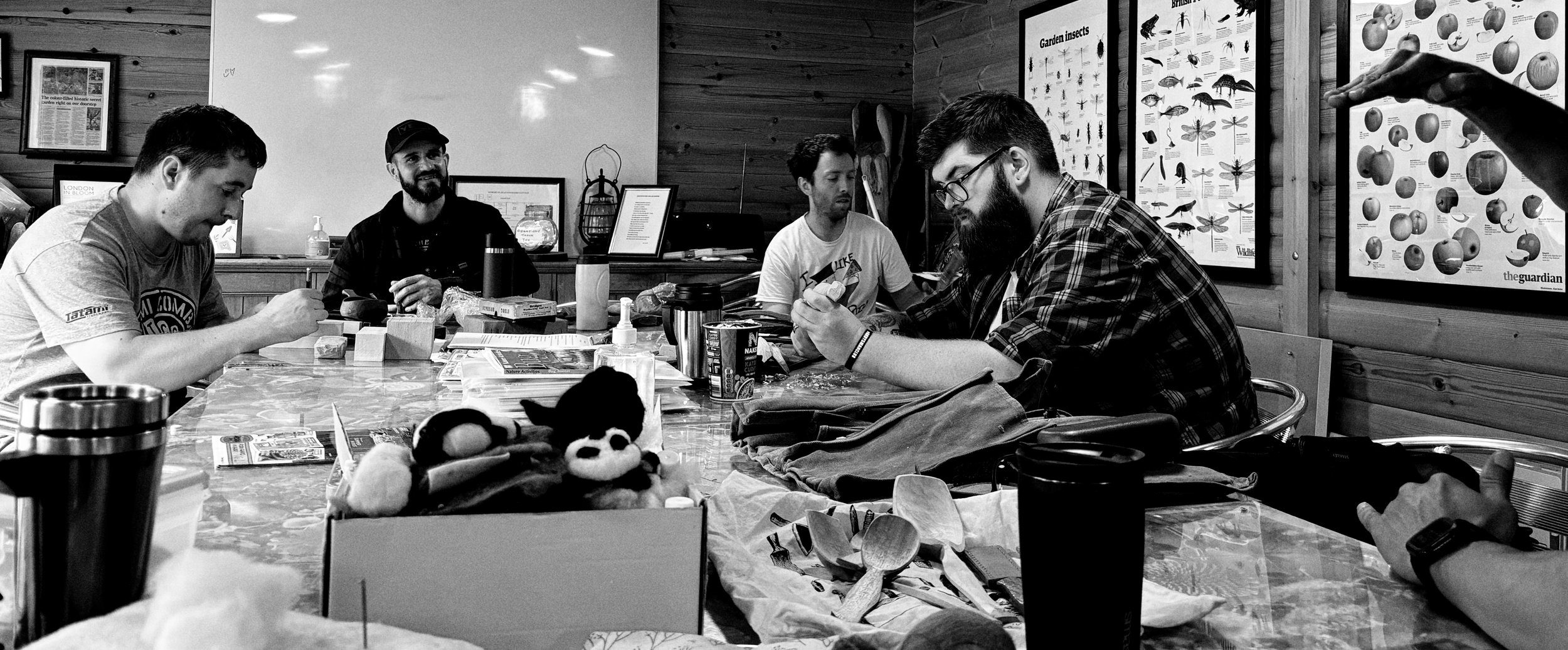Dearvvuođat meahcceolbmot - (Greetings fellow wood folk)[Sámi]
News - by Wendy of the Wool:
Although the weather forecasted a cloudy day on Saturday, we were treated to some lovely sunshine and the garden was looking absolutely glorious! This being England, we were soon given a sudden shower which had us all scurrying into the classroom with our precious tools!
We also welcomed a new joiner, Jamie No.2 (our 2nd Jamie). This brings the current tally to 4 Dave's, 2 Sue's and 2 Jamie's. If you meet anyone called Chris, Richard, Wendy, Mike or Carl, please do encourage them to join the group.
Richard, Chris, and Jamie No.2 worked on spoons. Jamie No.1 and Ranger Dave worked on gnomes and I (Wendy) felted a squirrel.
Just before we left, in a display of amazing brutal nature, a Sparrowhawk flew down and caught one of the many Bluetits we'd had the pleasure of watching flying around earlier in the day and headed off into the trees with it in his talons!
Word Of The Week - Brought to you by Mike Of The Bowl:
Hoppus Foot - Obsolete unit of measurement for the cubic contents of round timber. It was used to price whole trees. 1 h ft is equal to 0.036 m3, and 1 m3 = 27.74 h ft.
The unit was introduced by English surveyor Edward Hoppus in his 1736 manual of practical calculations. The tables include reference to stone as well as timber, as stone can similarly suffer wastage during processing into regular pieces.
The hoppus cubic foot (or ‘hoppus cube’ or ‘h cu ft’) was the standard volume measurement used for timber in the British Empire and countries in the British sphere of influence before the introduction of metric units. It is still used in the hardwood trade in some countries. This volume measurement was developed to estimate what volume of a round log would be usable timber after processing, in effect attempting to ‘square’ the log and allow for waste. The hoppus ton (HT) was also a traditionally used unit of volume in British forestry. One hoppus ton is equal to 50 hoppus feet or 1.8027 cubic meters. Some shipments of tropical hardwoods, especially shipments of teak from Myanmar (Burma), are still stated in hoppus tons.
Regular Bits n Bobs:
If you have them, bring your lathe, shave horse, and any other fun equipment. We have a few chopping blocks and one kuksa horse, so if you can bring your own please do. Note for those with Lathes, our floor space is mostly concrete, so treadles may not be able to be pegged down.
Our meets don’t just have to be about making wood chips, we encourage members to bring other crafts to the meets, be that spinning a yarn, weaving a basket, making a tool sheath from leather or bark, and even decorative methods for our wooden items. Feel free to showcase your other craft skills as we are interested in sharing and learning a wider range of skills as we grow as a group. If any members would like to lead a session of various crafts for the group, possibly a paid one day course, please get in contact with me and we will see what we can arrange for the future.
About the venue:
The venue has toilets, kitchen, and is accessible to wheelchairs. I will supply teabags, coffee, sugar and cows milk. Please bring your own non dairy milk if needed. If anyone wants to bring biscuits, cake, snacks to share that would be nice, but bring your own lunch, bowl/plate, drinking vessel, and cutlery please.
Members have suggested a contribution for Tea/Coffee a few times, so I have decided to ask for a contribution of 50p. Obviously if you bring all your own bits, there is no need to chip in.
Free secure parking is available within the walled garden. Follow the main driveway all the way down, past the public car park and the “no unauthorised vehicles” sign, then the Walled Garden’s big gates will be on the left. Toot your horn to let us know you’ve arrived.
See site map, and map links at bottom of page.
Hope to see you there, and please contact me if you have any questions.
Richard Roberts - Group Coordinator APTGW Essex Bodgers
APTGW Membership:
Our meets are free of charge to members of the Association of Polelathe Turners and Green Woodworkers.
Non members are welcome to join us a few times to see if it’s something they’d like to pursue further. We then ask that folks join the APTGW. It’s only £20 per year and membership runs from January to December each year.
Join the APTGW here: https://www.bodgers.org.uk/joinus
For just £20 a year you get:
A quarterly Gazette with news views and articles on all aspects of green woodworking.
Attend the UK Bodger's Ball always held in mid-May (this is chargeable, but a bargain!)
Win prizes for your creations at the many craft competitions at the ball
Connect with other Green Woodworkers, tool makers, rural crafters.
Learn new skills in a variety of length courses.
Attend and participate in the Annual General Meeting which is held at the Bodgers Ball
Vote on how the organisation progresses and elect, or even stand for the committee!
Here is a "what 3 words" ink to the location: https://w3w.co/sizes.soup.puddles
Google maps link to location: https://goo.gl/maps/f6rYfb92p6n43Uz99



